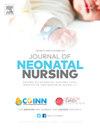埃塞俄比亚新生儿重症监护室收治的新生儿体温过低及其决定因素:系统回顾和荟萃分析
Q2 Nursing
引用次数: 0
摘要
背景:新生儿体温过低是一个影响医院和家庭新生儿的世界性问题。埃塞俄比亚的许多研究报告了关于这种情况的不一致的发现。我们的研究旨在确定新生儿低温症在新生儿重症监护病房的总体发病率,并确定主要影响因素。方法于2024年1月24日~ 2月25日,系统检索PubMed、HINARI、Global Health、Scopus、EMBASE、Web of Science、AJOL、b谷歌Scholar等文献。使用乔安娜布里格斯研究所的横断面研究检查表来评估质量。三位审稿人(YAF, WCT和AMZ)独立提取数据并审查文章。异质性评价采用Cochrane’s Q检验。采用随机效应模型估计新生儿低温症在新生儿重症监护病房住院患者中的合并发生率。结果在回顾了2940项研究后,我们在本综述和荟萃分析中纳入了6项研究,涉及2345名新生儿入住nicu。埃塞俄比亚这些新生儿中新生儿低温的综合估计为60.96% (95% CI: 55.42, 66.51)。与新生儿低温相关的关键因素包括皮肤接触(POR = 0.14;95% CI: 0.1, 0.2),新生儿复苏(POR = 6.68;95% CI: 3.59, 12.41),低出生体重(POR = 5.32;95% CI: 3.75, 7.54)和延迟开始母乳喂养(POR = 0.16;95% ci: 0.08, 0.3)。结论根据这项系统综述和荟萃分析,超过一半的新生儿出现了体温过低。在这项研究中,新生儿低温症与延迟开始母乳喂养、缺乏皮肤接触、低出生体重和新生儿复苏之间存在显著关联。为了减少这一问题,所有有关部门都应该引起重视。本文章由计算机程序翻译,如有差异,请以英文原文为准。
Neonatal hypothermia and its determinants among neonates admitted to the neonatal intensive care unit in Ethiopia: A systematic review and meta-analysis
Background
Neonatal hypothermia is a worldwide issue affecting newborns in both hospital and home settings. Numerous studies in Ethiopia have reported inconsistent findings on this condition. Our study aimed to determine the overall incidence of neonatal hypothermia among NICU admissions and identify the primary contributing factors.
Methods
From January 24 to February 25, 2024, a systematic literature search was conducted using PubMed, HINARI, Global Health, Scopus, EMBASE, Web of Science, AJOL, and Google Scholar. Quality was assessed using the Joanna Briggs Institute's checklist for cross-sectional studies. Three reviewers (YAF, WCT, and AMZ) independently extracted data and reviewed articles. Heterogeneity was evaluated using Cochrane's Q test. A random effects model was used to estimate the pooled incidence of neonatal hypothermia among NICU admissions.
Results
After reviewing 2940 studies, we included 6 studies involving 2345 neonates admitted to NICUs in this review and meta-analysis. The pooled estimate of neonatal hypothermia among these neonates in Ethiopia was 60.96% (95% CI: 55.42, 66.51). Key factors associated with neonatal hypothermia included skin-to-skin contact (POR = 0.14; 95% CI: 0.1, 0.2), neonatal resuscitation (POR = 6.68; 95% CI: 3.59, 12.41), low birth weight (POR = 5.32; 95% CI: 3.75, 7.54), and delayed initiation of breastfeeding (POR = 0.16; 95% CI: 0.08, 0.3).
Conclusion
According to this systematic review and meta-analysis, more than half of neonates developed hypothermia. In this study, there was a significant association between neonatal hypothermia among neonates and delayed initiation of breastfeeding, lack of skin-to-skin contact, low birth weight, and neonatal resuscitation. To reduce this problem, all concerned bodies should pay attention to this issue.
求助全文
通过发布文献求助,成功后即可免费获取论文全文。
去求助
来源期刊

Journal of Neonatal Nursing
Nursing-Pediatrics
CiteScore
2.00
自引率
0.00%
发文量
143
期刊介绍:
Aims & Scope: This is the practical, bimonthly, research-based journal for all professionals concerned with the care of neonates and their families, both in hospital and the community. It aims to support the development of the essential practice, management, education and health promotion skills required by these professionals. The JNN will provide a forum for the exchange of ideas and information between the range of professionals working in this field; promote cooperation between these professionals; facilitate partnership care with families; provide information and informed opinion; promote innovation and change in the care of neonates and their families; and provide an education resource for this important rapidly developing field.
 求助内容:
求助内容: 应助结果提醒方式:
应助结果提醒方式:


